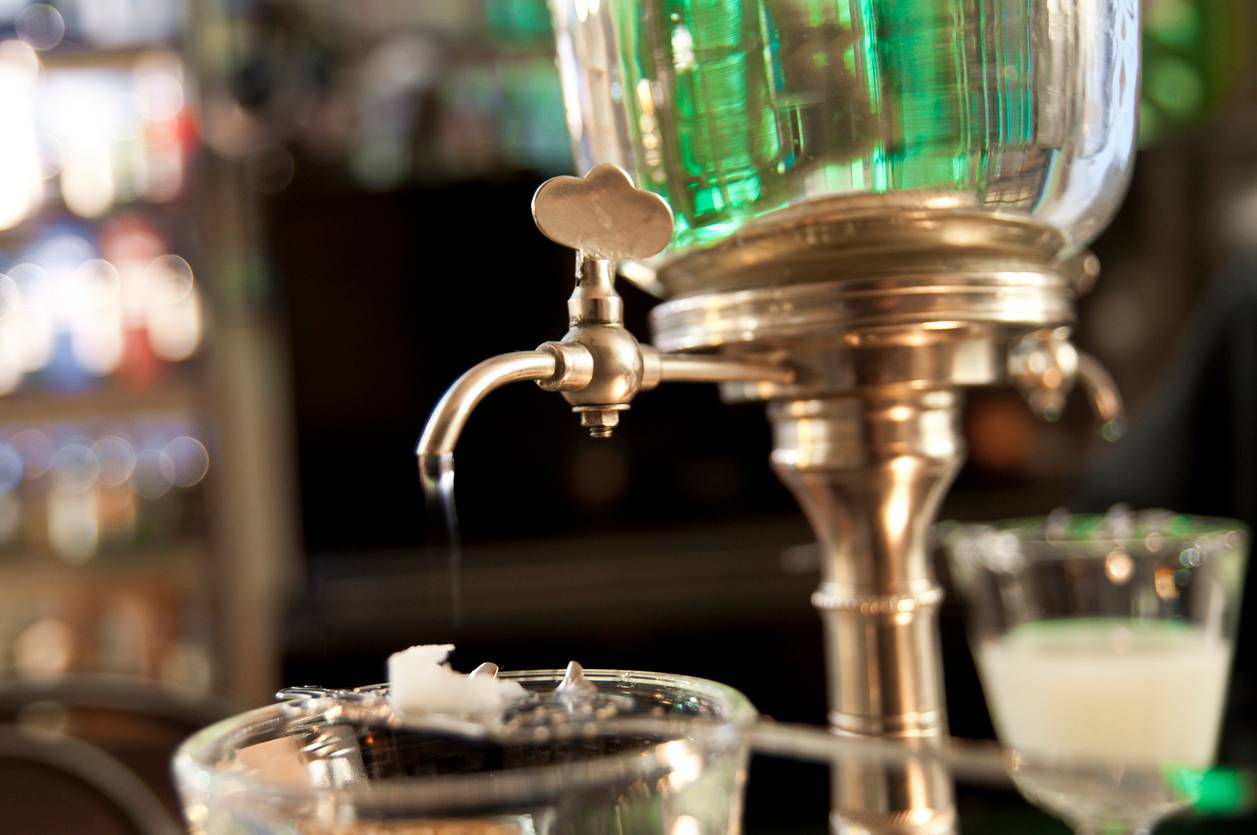

This is on top of alcoholics being alcoholics and drinking whatever could maximize the alcohol to cost ratio, of which cheap absinthe was probably the most effective option in Europe at the time, being a very high proof spirit in general. Because of its popularity, a lot of the distilling of cheap absinthe was slapdash and sometimes done at home, where the distillers wouldn't know that you needed to pour off the quantity of methanol that comes out at the beginning of distillation. Absinthe became really popular in France during the phylloxera epidemic, where the vast majority of European vineyards were destroyed. The early "hallucination" accusations were actually related to methanol poisoning and plain-old heavy intoxication from ethanol. Thujone is technically psychoactive however, your liver would dissolve from alcohol poisoning long before you felt anything from drinking absinthe. So while thujone is a toxin, the real danger in absinthe comes from the alcohol.The entire hallucination thing was a pernicious myth developed for political reasons in the late 19th and early 20th century. To reach that point, the sheer amount of alcohol found in absinthe would have killed even the hardiest of drinkers several times over. The recommended 20-cup limit for thujone consumption is well beyond what could feasibly be consumed. If someone wanted to drink absinthe to experience thujone’s excitatory effects, they would have to drink an absurd amount of the stuff. The most thujone-dense absinthes will still only contain about 35 milligrams. Meanwhile, even pure wormwood oil will only be about 40 percent thujone, meaning the percentage found in the absinthe is even lower. But absinthe can be up to 150 proof - that means it’s about 75 percent alcohol. So yes, if you consume just as much thujone as you do alcohol, then you’ll suffer some unfortunate symptoms, like convulsions and sleeplessness, that bear no semblance to the alcohol poisoning with which any heavy drinker is likely familiar. While an average drink holds 12 to 14 grams of alcohol, the five-gram dosage administered in the studies was more than enough to draw a severe reaction from the dogs used in those studies. Some trials involved the injection of up to five grams of either chemical. Absinthe: /r/Absinthe is focused on providing current, historically and. Aside from the fact that they were conducted on animals and then generalized to humans - the only evidence for absinthism in humans is anecdotal at best - the experiments compared the effects of alcohol injections with comparable dosages of wormwood extract. Abilify hallucinations reddit Abilify is an antipsychotic medication that is. In extreme enough cases, this mechanism causes the seizures that were observed by 19 th-century researchers.īut there are some problems with those studies. By cancelling out an inhibitor, thujone has a double-negative effect that causes rampant excitation throughout the brain. Thujone suppresses a neurotransmitter called GABA, which is responsible for inhibiting activity in the brain. It was these studies that first gave rise to the idea that absinthe has an effect on its drinkers that is wholly different from other alcoholic drinks. Studies on thujone and its toxicology from the 19th century found that the effects of thujone poisoning - auditory hallucinations, seizures and other muscular convulsions - are very different from the common symptoms of alcohol poisoning, which sedates rather than agitates. Thujone, in high enough concentrations, is toxic to animals. Wormwood oil is mostly made up of a chemical called thujone. That key ingredient is the oil of an herb called wormwood. While so-called absinthism is really just alcoholism, there is one particular compound found in absinthe that’s responsible for its toxic reputation. So much for reports from the likes of Oscar Wilde, claiming that the drink gave them a new clarity.

Rather, these accounts were likely the sensationalist efforts of prohibitionists, or marketing efforts hoping to build up a reputation around absinthe. Some unverified, historic accounts of hallucinogenic effects might be explainable by toxic chemicals that were added to enhance absinthe’s coloration, but the drink itself didn’t do anything to them. Absinthe became famous for supposedly driving its fans mad, even spurring them to commit murder.īut people who drink the sickly-colored spirit generally have the same experience - getting drunk but missing the far-out hallucinations that the drink supposedly ought to deliver. Sensational accounts of the highly-alcoholic drink, originally thought to cause hallucinations, grew increasingly common and outlandish. Why does whiskey feel like it burns? Dyani Sabin Ībsinthe, called the “green fairy” after its peculiar hue, was banned in the United States back in 1912.


 0 kommentar(er)
0 kommentar(er)
